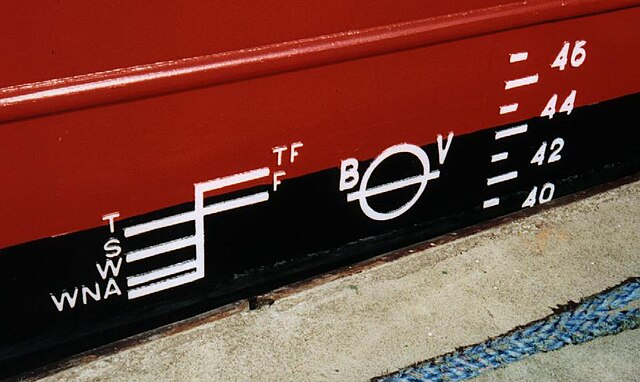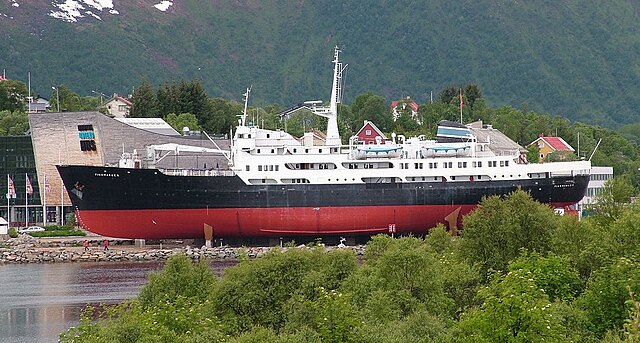The waterline is the line where the hull of a ship meets the surface of the water. Specifically, it is also the name of a special marking, also known as an international load line or Plimsoll line, that indicates the draft of the ship and the legal limit to which a ship may be loaded for specific water types and temperatures in order to safely maintain buoyancy, particularly with regard to the hazard of waves that may arise. Varying water temperatures will affect a ship's draft, because warm water is less dense than cold water, providing less buoyancy. In the same way, fresh water is less dense than salinated or seawater with a similar lessening effect upon buoyancy.
Load line mark and lines on the hull of a ship
Load line markings on a cereal carrier, certified by Bureau Veritas.
Samuel Plimsoll
Lloyd’s Register (“LR”) load line mark and lines and timber load line mark and lines for power-driven merchant vessels
A hull is the watertight body of a ship, boat, submarine, or flying boat. The hull may open at the top, or it may be fully or partially covered with a deck. Atop the deck may be a deckhouse and other superstructures, such as a funnel, derrick, or mast. The line where the hull meets the water surface is called the waterline.
Hull form lines, lengthwise and in cross-section
Ship above the water with the entire hull visible
Royal Navy World War II MTB planing at speed on calm water showing its hard chine hull with most of the forepart of the boat out of the water.







